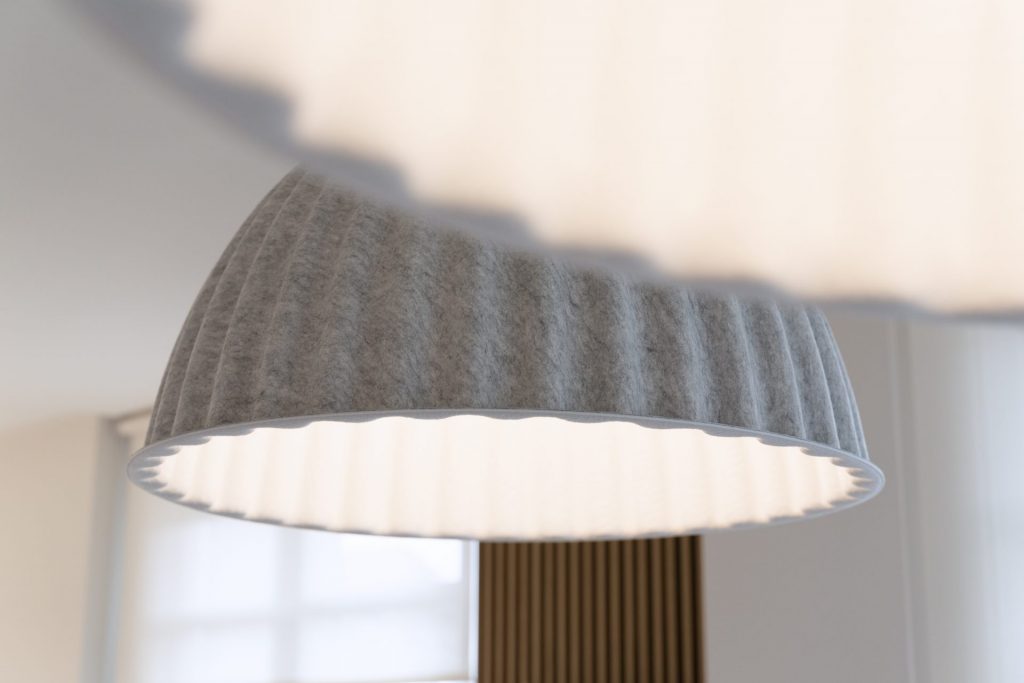
Office lighting
The office is one of the places where we spend most of the day, so it is very important for it to be well lit. The lighting in an office influences the visual health and well-being of workers. The right lighting boosts productivity, improves motivation and helps reduce absenteeism. Did you know that there is a minimum recommended lighting level for offices?
Types of office lighting
Natural lighting
The sun is the best option in order to work calmly and easily, without tiring the eyes. Having sunlight at work has the following advantages:
- Reduced fatigue and better performance. Headaches, eye fatigue and general discomfort are more common when there is poor lighting. All of this has an impact on worker performance and responsiveness.
- Natural light helps to maintain a good mood.
- It helps regulate the biological clock and helps you fall asleep. People who enjoy quality rest perform better, feel better and are in a better mood.
The lack of windows and natural light increases moodiness and the desire to leave the premises as soon as possible, as the worker may feel closed-in, which increases tension and stress.
Artificial, sustainable lighting
It is important to have slightly brighter and more direct light at each workstation in order to work comfortably. In this regard, focal lighting provides sufficient visibility.
This is lighting that affects an individual area, which is why a hanging or flexo light is usually used.
There is an increasing trend towards the installation of LED lamps, which consume 80 to 90% less energy than bulbs and lamps. LED bulbs do not have filaments, but rather light-emitting diodes; LEDs are semi-conductive electronic components that emit light when electric current passes through them. The energy difference is a tremendous amount of light. Although the investment is greater, it pays off in a short time and contributes to the sustainable development of companies.
Advantages:
- It provides the right amount of light for each workstation, according to the type of activity.
Disadvantages:
- A fixed installation is required in each area and for each type of luminaire.
Decorative lighting
The main purpose of decorative lighting is to create a warm, pleasant atmosphere and to make a space more attractive by highlighting its forms, colours and textures. It also helps us to highlight spaces within the office complex.
Decorative lighting is used in areas such as the reception, where it also serves to highlight specific elements or colours to emphasise the corporate aspect of the space.
Advantages:
- It provides a warm, pleasant light, thus promoting well-being and relaxation in communal areas.
- It can be used for designer luminaires and sculpture lamps, giving the environment an elegant and sophisticated air.
Disadvantages:
- Care should be taken to ensure that decorative lighting does not cause visual disturbances, such as glare or reflections that impair the normal performance of work activities.
Recommended lighting levels in offices
It is important to find the most appropriate lighting levels for each activity. For example, in design rooms, where colour rendering is of great importance, the lighting will be much more demanding.
In order to achieve a good level of visual comfort, a balance must be struck between the quantity, quality and stability of light, ensuring that there is no glare and flicker, uniformity of illumination, absence of excessive contrasts, etc.
- Work tables, administrative: 400 to 700 lux
- Drawing tables, design: 600 to 1500 lux
- Meeting rooms, boardrooms (general lighting): 200 to 350 lux
- Meeting rooms, boardrooms (above the table): 400 to 700 lux
- Archives: 100 to 400 lux
- Transit areas: 150 to 500 lux
- Corridors and transit areas: 150 to 500 lux
Example of office lighting
Natural lighting

Natural lighting is closely linked to the choice each company makes for its offices. This is an example of how it can be a great ally in creating areas that provide a high level of comfort and concentration.
Artificial lighting

The integration of artificial lighting in harmony with the architecture can be a great resource for proper lighting in workspaces where concentration is required.
Decorative lighting

In this case, the use of spot and decorative lighting was used to emphasise informal meeting areas and to differentiate them from the rest of the space.

This is another example of how indirect decorative lighting helps to create a higher quality and more comfortable atmosphere.




